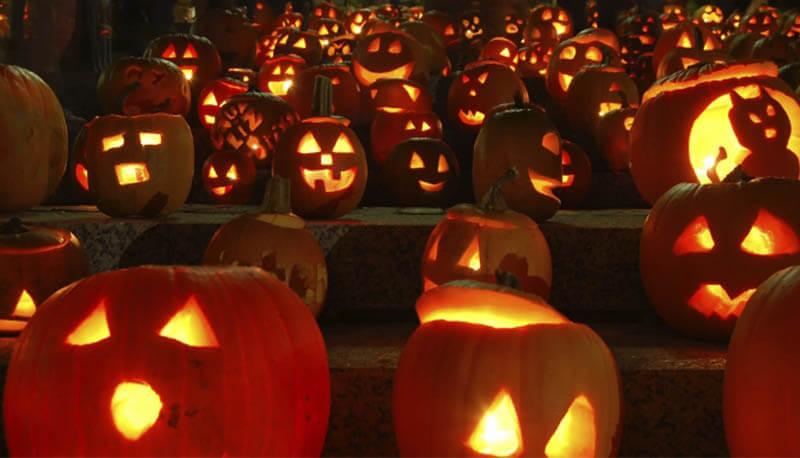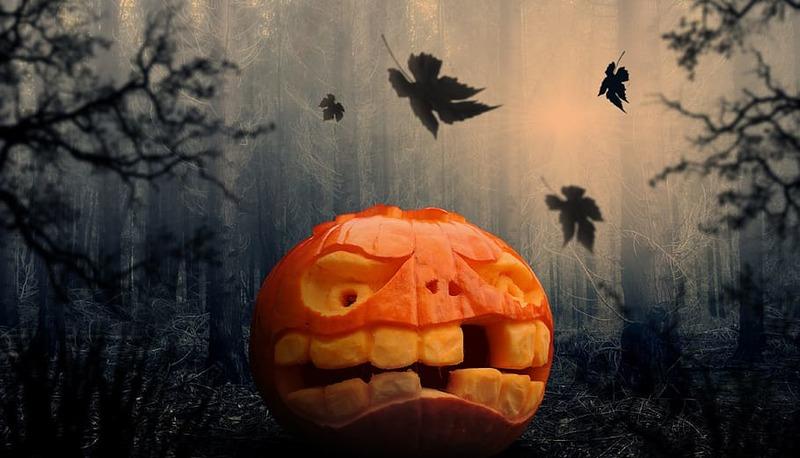Concetti Chiave
- Halloween, celebrated on October 31, is a major event in America with decorated houses and costumed children going door-to-door for "trick or treat".
- The origins of Halloween trace back to a pagan festival celebrated by the Celts in Ireland and Great Britain, later adapted by Romans and Christians.
- The modern name "Halloween" is derived from "All Hallow’s Eve", linked to the Christian feast of All Saints on November 1.
- The tradition of carving pumpkins, known as Jack-o'-lanterns, is based on a legend involving a crafty blacksmith who tricked the devil.
- "Trick or treat" is a Halloween tradition where participants, often dressed as monsters, go door-to-door, a practice rooted in both pagan and Christian legends.
Indice
The celebration of Halloween
What is Halloween? Halloween is a traditional holiday celebrated on the night of October 31, very popular especially in America. Here, the festival is a true national event, with houses decorated with the most disturbing decorations possible and children dressed in costumes that recall horror movies and strange characters and go door to door collecting sweets, fruits and other delicacies. In addition to this trick or treat, there are many other traditional Halloween activities. Some of these include costumed parties, where the program is to watch horror movies and be afraid, vandalism on the streets or at cars, such as egg throwing, going to "haunted" homes, and typically autumn activities like visiting barns, some of these also "infested".
In addition to this trick or treat, there are many other traditional Halloween activities. Some of these include costumed parties, where the program is to watch horror movies and be afraid, vandalism on the streets or at cars, such as egg throwing, going to "haunted" homes, and typically autumn activities like visiting barns, some of these also "infested".Halloween is celebrated in most of the Western world, most commonly in the United States, Canada, United Kingdom, Ireland, Peru, and with increasing popularity in Australia and New Zealand. In recent years, Halloween has also been celebrated in some parts of Europe, such as Belgium, France and Spain.
The history of Halloween and the origin of tradition
Halloween originated under a different name. It began as a pagan festival, celebrated by the Celtic population of Ireland and Great Britain, followed by the Irish, Scots, Welsh and other immigrants who imported some versions of the tradition into New America in the 19th century. Only at the end of the 20th century, other European countries also embraced this American and pagan festival in their countries.The Romans later made the feast of Semhain coincide with their feast of the dead, which was celebrated in May, while Christians instituted the feast of the dead on November 2, the day after All Saints. In fact, the same modern name of Halloween, and its oldest rendition Hallowe'en, is linked to the feast of All Saints, as it derives from "All Hallow’s Eve", which in Old English meant the eve of All Saints. The celebration was held for the first time in the Early Middle Ages in some historically Catholic Nordic countries such as Ireland and England; subsequently, the rituals and customs associated with it have evolved, to the point of increasing the fame of Halloween overseas, towards America. The origins of the festival are linked to that of All Saints' Day (the feast of saints), celebrated in the Church on Sunday after Pentecost, on May 13. Some say that the festival originated when, in order not to coincide the pagan religious holidays with the Catholic ones, the popes Gregory III and Gregory IV moved the ancient Christian feast of All Saints from May 13 to November 1. In the nineteenth century, in fact, scholars have hypothesized that the celebration may have originated or been influenced by Samhain, a Celtic festival corresponding to the end of the summer season, which coincides with the Celtic New Year, and held between 31 October and 1 November. During Samhain, the last harvest was collected before the start of the cold season, and it was an opportunity to set aside provisions to overcome the cold winter of the north. For this reason, Semhain was the most important holiday for the Celts and represented a moment of passage, timeless. From this derives the funerary character of the feast, which is resumed in modern Halloween: on this day the Celts believed that the wall dividing the kingdom of the dead from that of the living thinned and that the two worlds entered into communication. The dead could return to the world of the living and make contact with them. For this reason the feast of Semhain was also a time to honor the dead. Even today, when we think of Halloween we recognize it as a far from religious holiday, because it is the night where all the monsters and evil creatures come to life and roam the city in search of sweets.
History and legends of the Halloween pumpkin
Halloween falls on October 31 of each year and is celebrated mainly in the United States and England, although in recent decades has also taken place in many other countries, including Italy. Another particular tradition of the festival consists in taking a beautiful pumpkin, a vegetable of the autumn season, whose harvest coincides with the day of Halloween, empty it from the pulp inside and affect the rind of the eyes and a mouth disturbing or cheerful. Inside the pumpkin, then, a candle is lit, in this way, the light creates an effect as if the pumpkin is alive and looks bad. In fact, the Halloween pumpkin has legendary roots: it derives from the legend of Jack-o'-lantern, a sly and drunken blacksmith who managed several times to deceive the devil himself and who, to ward him off, placed lanterns outside the houses of the country.
Trick or treat? The ultimate Halloween game
During the night between 31 and 1 November children, but often also adults, walk from house to house disguised as monstrous creatures for the famous ritual of "trick or treat". The inhabitants of the house can then save themselves from the terrible jokes in macabre colors only by giving treats to children. Legend has it that during the night of Semhain, a certain Jack walked around the houses of the village knocking on every door and asking "Treack or treat?" which in Italian means "sacrifice or curse". Not to be cursed, the locals always preferred to pay a sacrifice to Jack. Another legend, cattoloca this time, tells that the classic "trick or treat" was born because during the day of All Saints, beggars used to beg in exchange for a prayer for the deceased of their benefactors.This shows us that the Halloween festival and its customs have been built over the centuries, through the union of legends related to various eras and different traditions. Halloween, like other modern holidays, is the result of a long series of transformations and mixtures of elements of different origin.
Domande da interrogazione
- Qual è l'origine della festa di Halloween?
- Come si è evoluta la tradizione della zucca di Halloween?
- Qual è il significato del "dolcetto o scherzetto"?
- In quali paesi è maggiormente celebrato Halloween?
- Qual è il legame tra Halloween e la festa di Ognissanti?
Halloween ha origine come festa pagana celebrata dai Celti in Irlanda e Gran Bretagna, e successivamente importata in America nel XIX secolo da immigrati irlandesi, scozzesi e gallesi.
La tradizione della zucca intagliata deriva dalla leggenda di Jack-o'-lantern, un fabbro astuto che ingannò il diavolo e usava lanterne per allontanarlo.
"Dolcetto o scherzetto" è un rituale in cui i bambini, travestiti da creature mostruose, vanno di casa in casa chiedendo dolci per evitare scherzi macabri.
Halloween è principalmente celebrato negli Stati Uniti, Canada, Regno Unito, Irlanda, Perù, e con crescente popolarità in Australia e Nuova Zelanda.
Halloween è legato alla festa di Ognissanti, poiché il nome deriva da "All Hallow’s Eve", la vigilia di Ognissanti, e la celebrazione è stata influenzata da tradizioni cristiane e pagane.







 Accedi a tutti gli appunti
Accedi a tutti gli appunti
 Tutor AI: studia meglio e in meno tempo
Tutor AI: studia meglio e in meno tempo